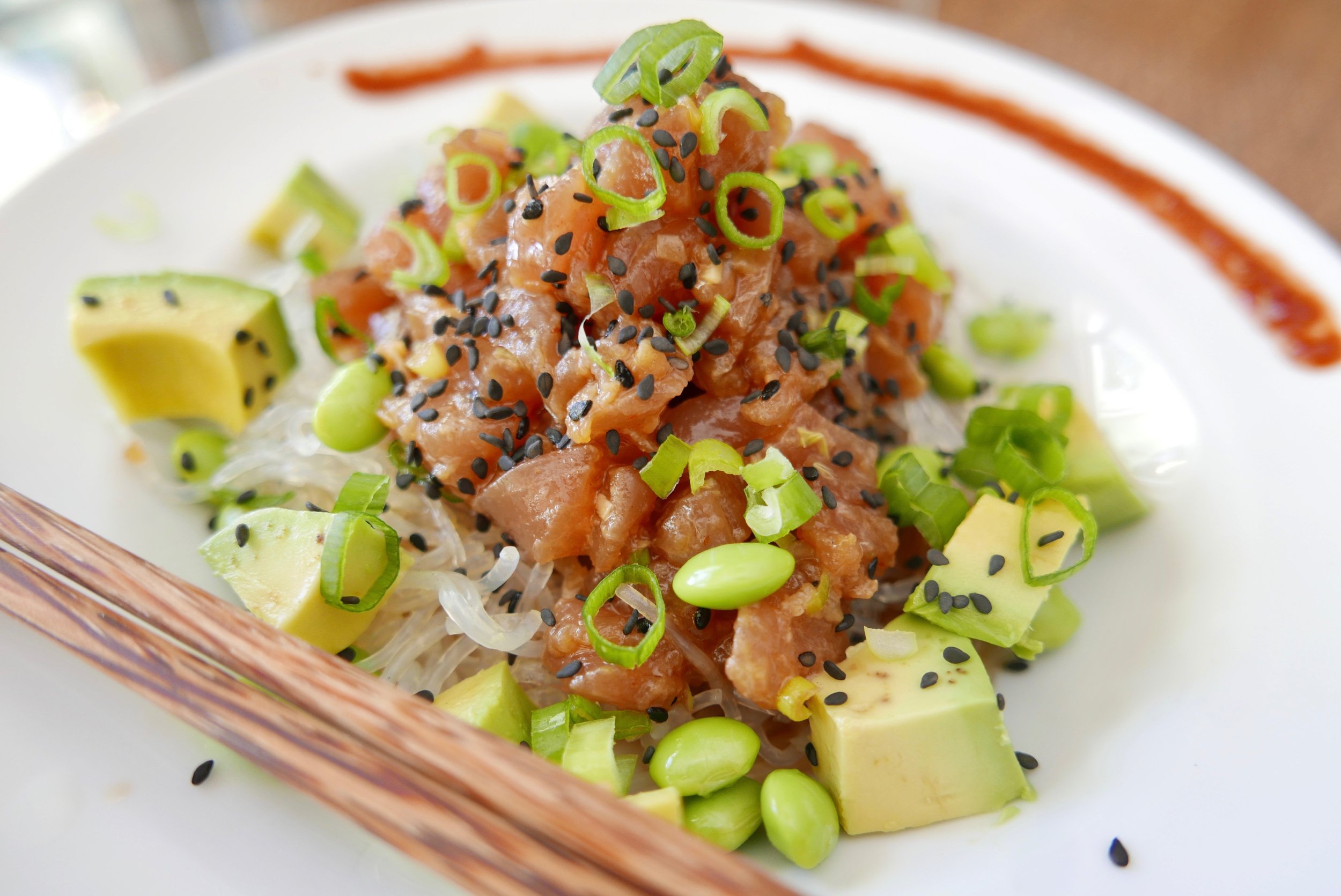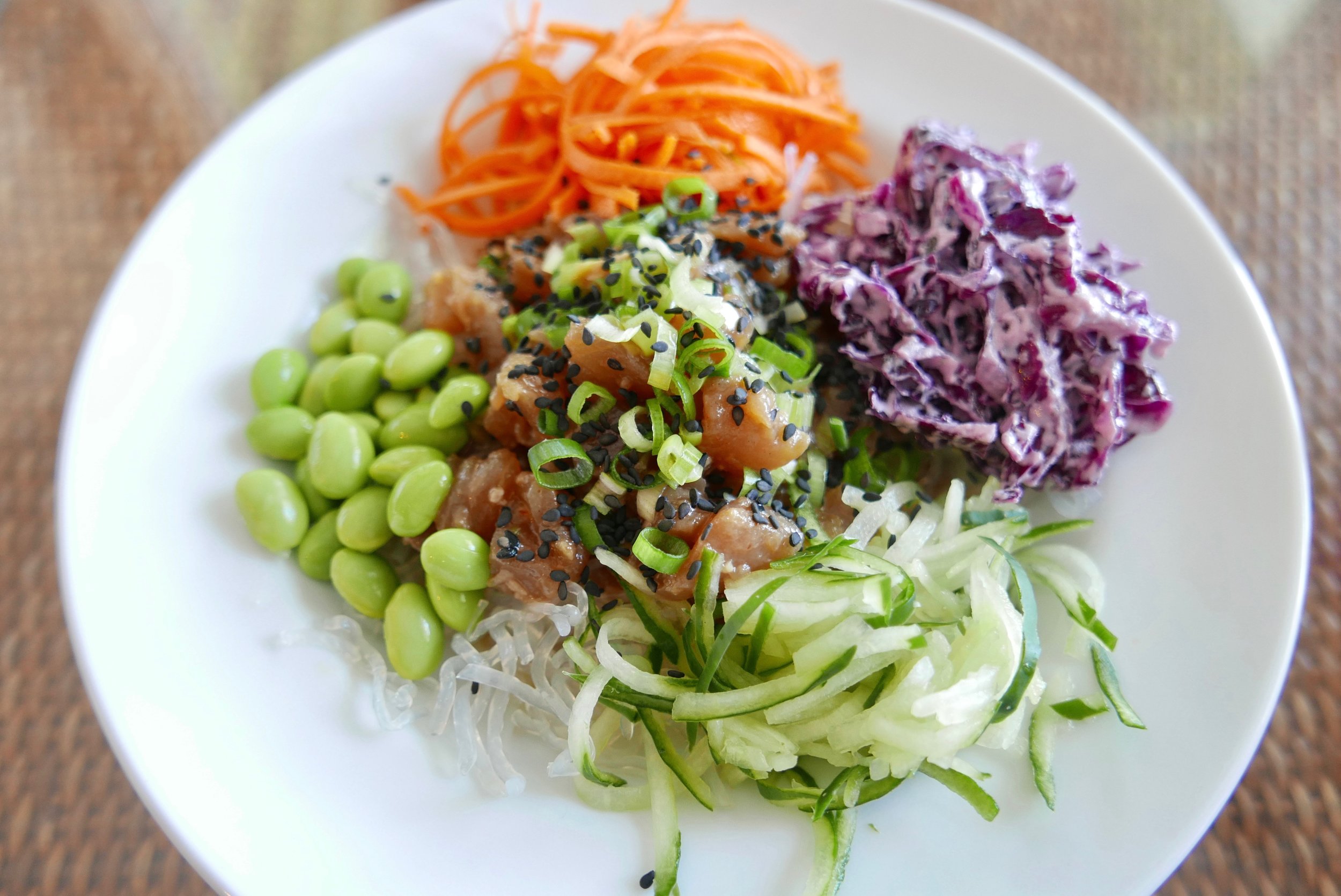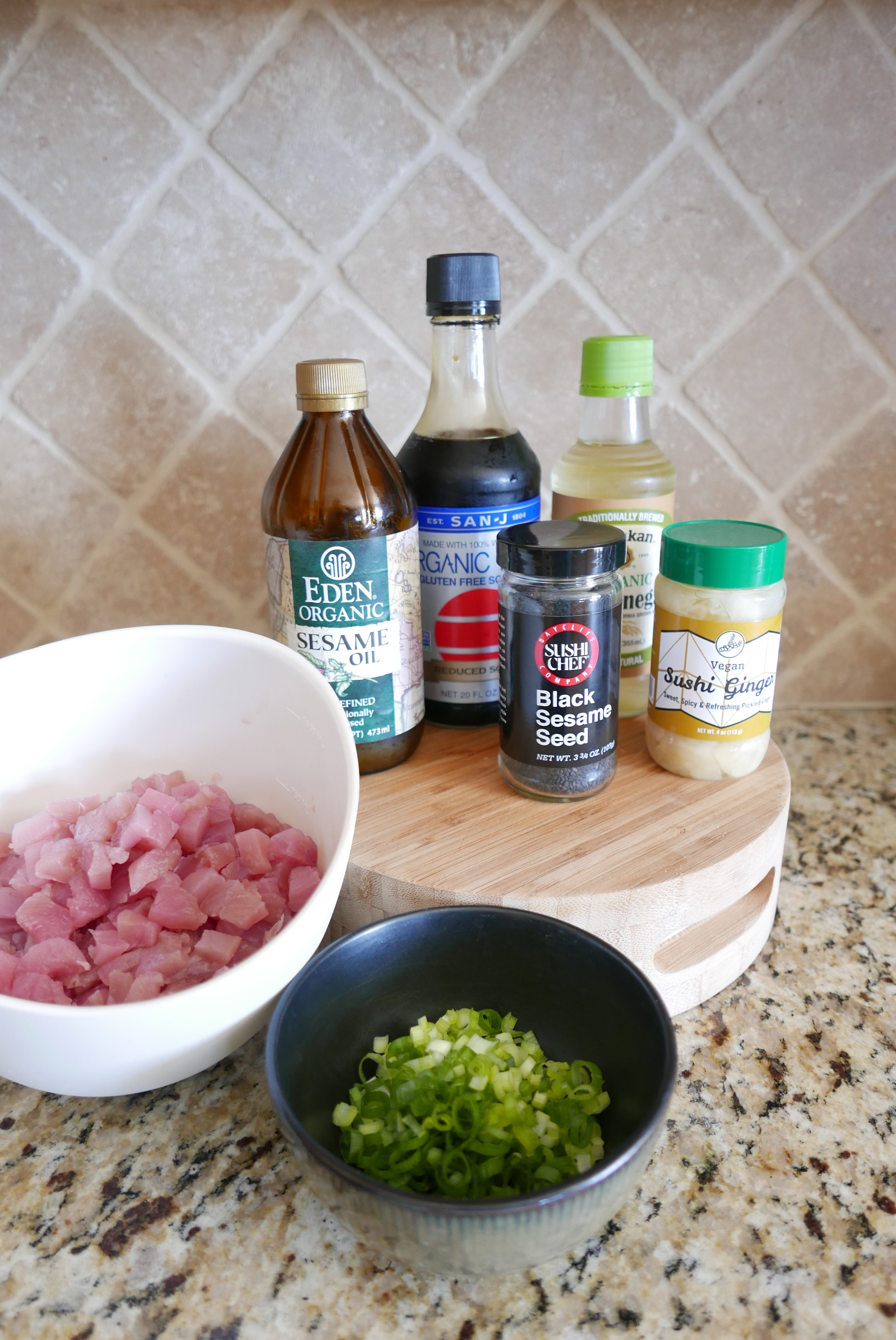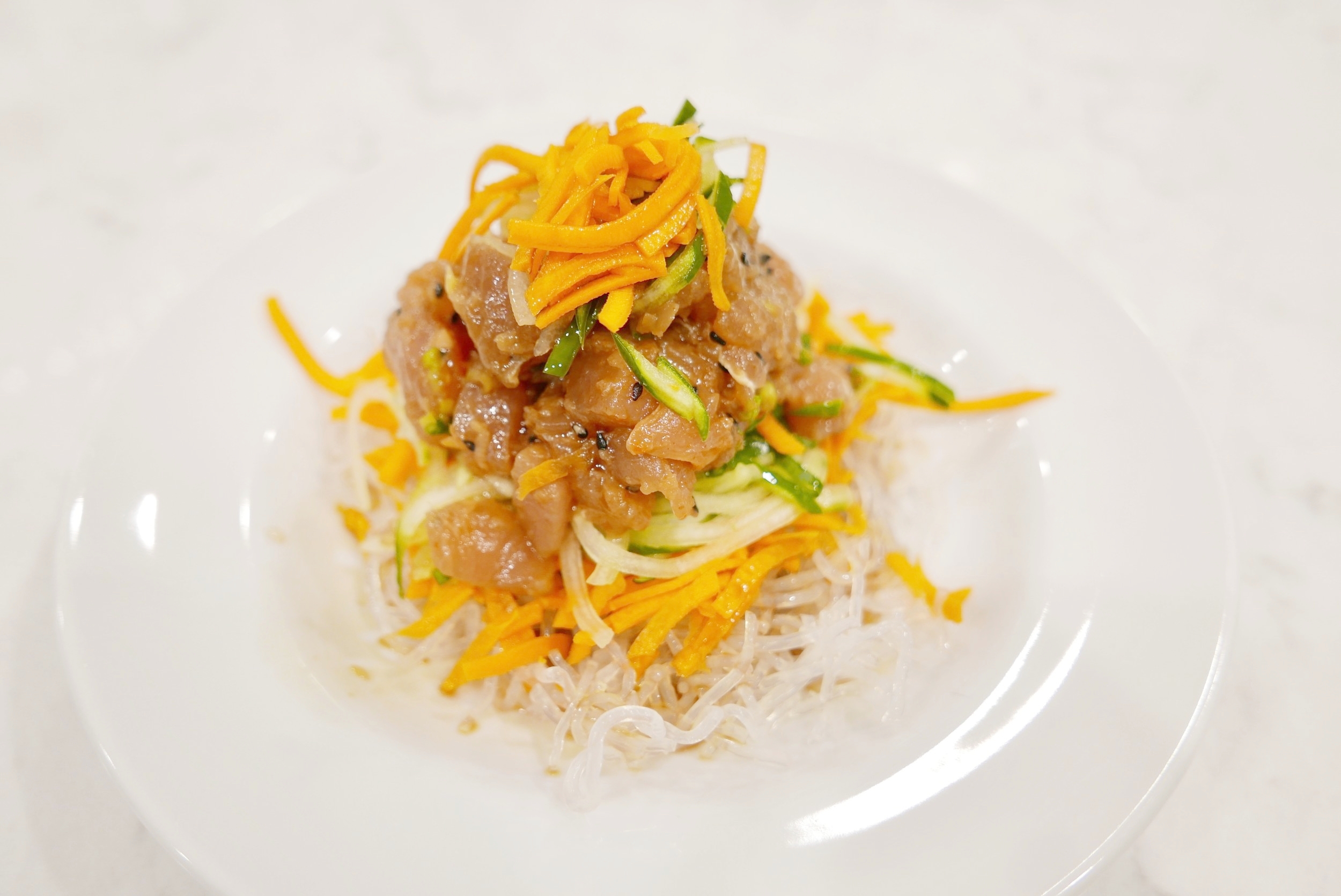Poke Bowls
Poke is a classic Hawaiian dish that has been around for centuries. It traditionally consisted of raw fish, sea salt, seaweed, and roasted kukui nut. Initially served as a pupu, small plate, it has now gained popularity and is commonly eaten as a main course. The Japanese influenced the recipe by adding shoyu, or soy sauce, as well as sesame oil. There are many variations of poke which is usually made from raw yellowfin tuna. You’ll see it served with seaweed, green and white onions, sesame seeds, and Siracha for some heat.
In order to reap the benefits of poke and consider it a full macronutrient rich meal I make sure to add plenty of healthy fats from sesame oil and avocado as well as some vegetables. I commonly spiralize cucumbers and carrots and steam some edamame for some added nutrients. Keep in mind that the fat soluble vitamin D can only be absorbed when eaten with good fats to aid in absorption.
Benefits of Tuna
We, especially pregnant women and children, are warned against eating too much tuna. It's unfortunate because there are some really wonderful benefits to eating fresh fish. Tuna contains wonderful B vitamins which help in the production of red blood cells. D is yet another vitamin found in tuna which is essential in helping the body fight infections and combat cancer. Children can really reap the benefits of eating this fresh fish as the omega-3 fatty acids lend a hand in healthy brain development while reducing inflammation.
A Quick Note on Mercury
The medical community has warned against eating large amounts of fish that contain mercury. The idea stems from the fact that mercury is a neurotoxin which attaches itself to fatty tissue in the body and can cause all sorts of issues. What the medical community fails to inform is that most of the fish we are consuming that contain mercury also contain higher levels of selenium which binds to the mercury neutralizing it so that the body eventually flushes it out instead of attaching to the brain, kidneys and liver (1).
When eating very large amounts of fish containing mercury, which I’ve been doing for the past week, I take a small supplemental amount of aqueous selenium to make certain that my selenium levels outweigh those of mercury in my body. It’s not necessary but I do it just to be safe as I've had my fair scare of mercury toxicity.
Black or White Seeds
Sesame seeds come in a variety of colors, including black, white, red and yellow. Though most grocery stores carry just black and white varieties, the black ones still have the hulls attached which is where you'll find the majority of the nutrients such as magnesium and calcium. Both minerals mentioned are known to reduce headaches and regulate blood pressure. These magnificent seeds are also known to have cholesterol-lowering effects as well as reduce the risk of developing some types of cancers. Be sure to choose the black over the white so you can reap the benefits.
Ingredients
1 lb fresh sushi-grade ahi tuna, cubed
3 Tbsp tamari or soy sauce
2 Tbsp sesame seed oil
1 Tbsp rice wine vinegar
2 tsp ginger juice (from pickled ginger)
2 tsp sesame seeds (black or white)
1 tsp pickled ginger minced
1 green onion, thinly sliced
For Serving you can add a variety of items to your poke bowls
Kelp Noodles or Rice as a base
Seaweed Salad
Spiralized Cucumber or Carrots
Avocado
Edamame
Green Onion
Pickled Ginger
Ponzu Sauce
Wasabi
Instructions
Marinate the tuna cubes with tamari, sesame oil, rice wine vinegar, ginger juice, sesame seeds, green onions and pickled ginger. Let sit in the refrigerator for 5 minutes to an hour.
When plating, place base in the bowl and top with several scoops of tuna. Go ahead and add any toppings you like and pour some ponzu over the top.






